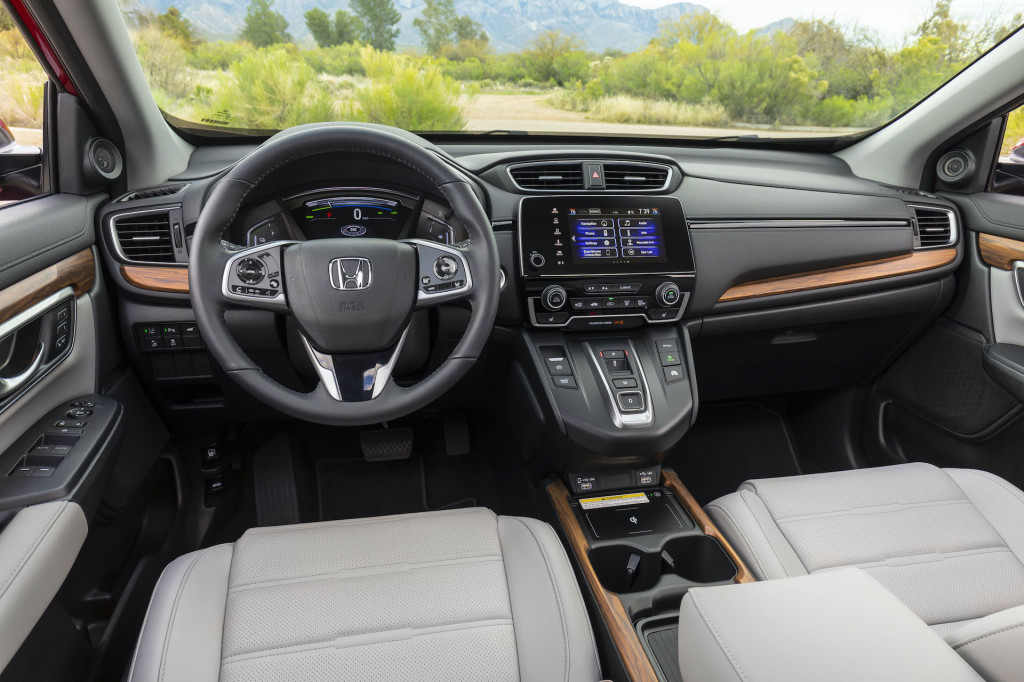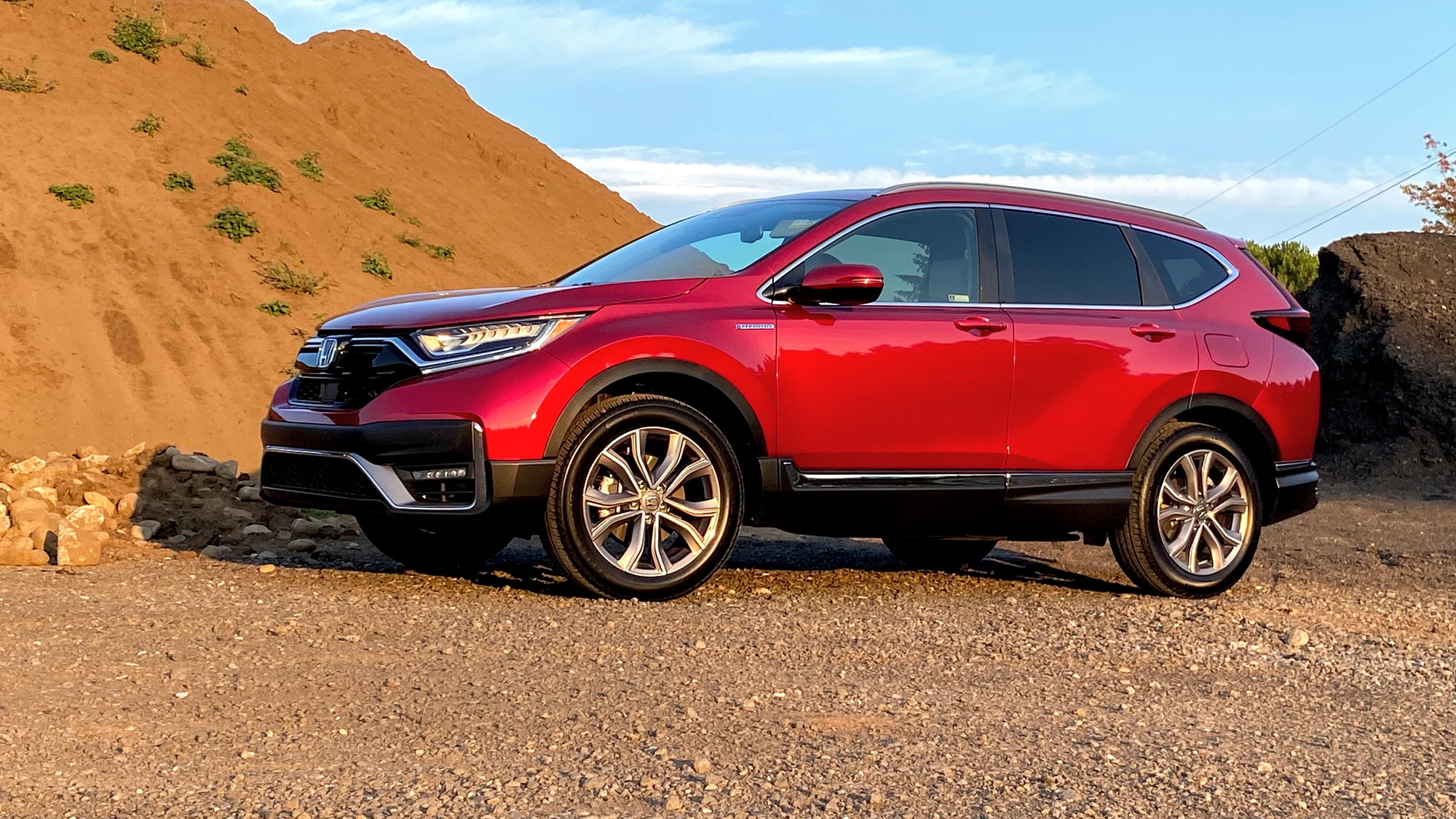The Honda CR-V Hybrid is a quiet giant in the grand shift that’s happening in the auto industry.
Yes, you might still be able to get non-hybrid versions of the Honda CR-V, or its rivals like the Toyota RAV4, Hyundai Tucson, or Ford Escape, but each year the portion of these that are selling as hybrids becomes a little larger.
It’s the hybrid models that are fast becoming the mainstream; it’s no surprise because in most instances, the hybrids are better to drive than their non-hybrid counterparts.
The CR-V Hybrid is no exception. Last year, when we first drove the 2020 Honda CR-V Hybrid, on rippled two-laners and boulevards surrounding Tucson, we found that this model brings a linear, EV-like driving experience without the plug.
After revisiting the CR-V in top Touring trim over a week of relaxed family-errand duty, I found those attributes spot-on—especially for families who don’t yet have nightly access to a charging station.

2021 Honda CR-V (CR-V Hybrid)
First off, I got excellent mileage. The CR-V Hybrid has EPA fuel economy ratings of 40 mpg city, 35 highway, and 38 mpg combined. With temperatures mostly in the 50s, I averaged nearly 36 mpg over about 85 miles between shorter trips around town and relaxed freeway driving.
Then on a separate 53-mile loop I’ve taken many hybrid models—a there-and-back trip bringing me from about 300 feet altitude up to 1,000 and back, with a mix of slower freeways, rolling country roads, and 40-mph boulevards—I averaged 42 mpg.
One side note: The trip computer tipped me that the CR-V Hybrid gets significantly worse mileage at U.S. interstate speeds of 70 mph and up; but I didn’t do enough driving at those speeds to substantiate that. This has been one of the strengths of Hyundai's hybrid system, so stay tuned to see if the upcoming Tucson Hybrid meets that mold or if it's merely aerodynamics and physics.
With a combined 212 horsepower and 232 pound-feet of torque, the CR-V Hybrid doesn’t feel quick, but it does feel confident and consistent. What that means is that it responds instantly to the accelerator, and there’s none of the latency that’s customary for hybrids, as power sources are juggled and ratios are set. From about 5 mph to 40 mph—really where it matters for a lot of commutes—the CR-V Hybrid feels quicker than its roughly eight-second 0-60 mph time suggests.

2021 Honda CR-V (CR-V Hybrid)
Honda’s two-motor hybrid system uses one of the motors as a main traction motor for the vehicle, with the gasoline engine only clutched in for light cruising conditions. A modest 1.4-kwh battery acts as an energy buffer, and the second motor acts primarily as a generator with the 2.0-liter Atkinson-cycle inline-4. The only uncouth moments come when you surprise the hybrid system, asking for more output than it planned for, and it sends the engine racing for some seconds, but it’s generally short-lived.
The CR-V Hybrid is exactly what it needs to be in terms of driving attributes. The current version rides soft, but it tracks well and steers with a precision Honda lost for a while on the CR-V and has now recaptured. Road and wind noise are well hushed, too.

2021 Honda CR-V Hybrid - review update
Unlike the RAV4 Hybrid, which adds a small motor in back, the CR-V Hybrid has a system Honda calls Real Time 4WD, with a propshaft to the rear wheels. Even though most CR-V owners might not need the system very often, 65% of CR-Vs are bought with all-wheel drive, so Honda saw the chops for deep snow, mud, or sand as essential.
In loose sand at last year’s launch event we noted the system allowed more certain torque delivery than Toyota’s system; and in my revisit with the system, over the moist sand and gravel seen in the background of these photos, the system didn’t flinch.

2021 Honda CR-V (CR-V Hybrid)
Seating and packaging is unchanged versus non-hybrid versions of the CR-V, and you sit upright, with a low beltline affording a better view outward than you’ll find in other models in this class. Getting in and out of the back seats is just as easy as it is in front. And even before flipping forward the rear seatbacks, the cargo volume of 33 cubic feet is astoundingly good—especially how far upward it goes, and how wide the hatch opens.
The one we revisited, still a 2020 model, added up to $37,045. Considering modest price hikes, that adds up to $37,525 for the unchanged 2021 version now at dealerships. We tend to see the CR-V Hybrid EX as the best value, at $31,735, as it includes a 7.0-inch infotainment touchscreen with Apple CarPlay and Android Auto compatibility, plus dual-zone climate control, heated front seats, a moonroof, and more. The Touring model I drove comes with premium sound, a native navigation system, and wireless phone charging. There are many automakers that do the infotainment interface more intuitively, but at least this one is responsive.
The CR-V Hybrid isn’t as exciting or tech-glamorous as the latest EVs that have it in their sights—like the Volkswagen ID.4 electric crossover we recently drove—but for those who can’t yet plug in, it’s keeping pace in just the right way.



















